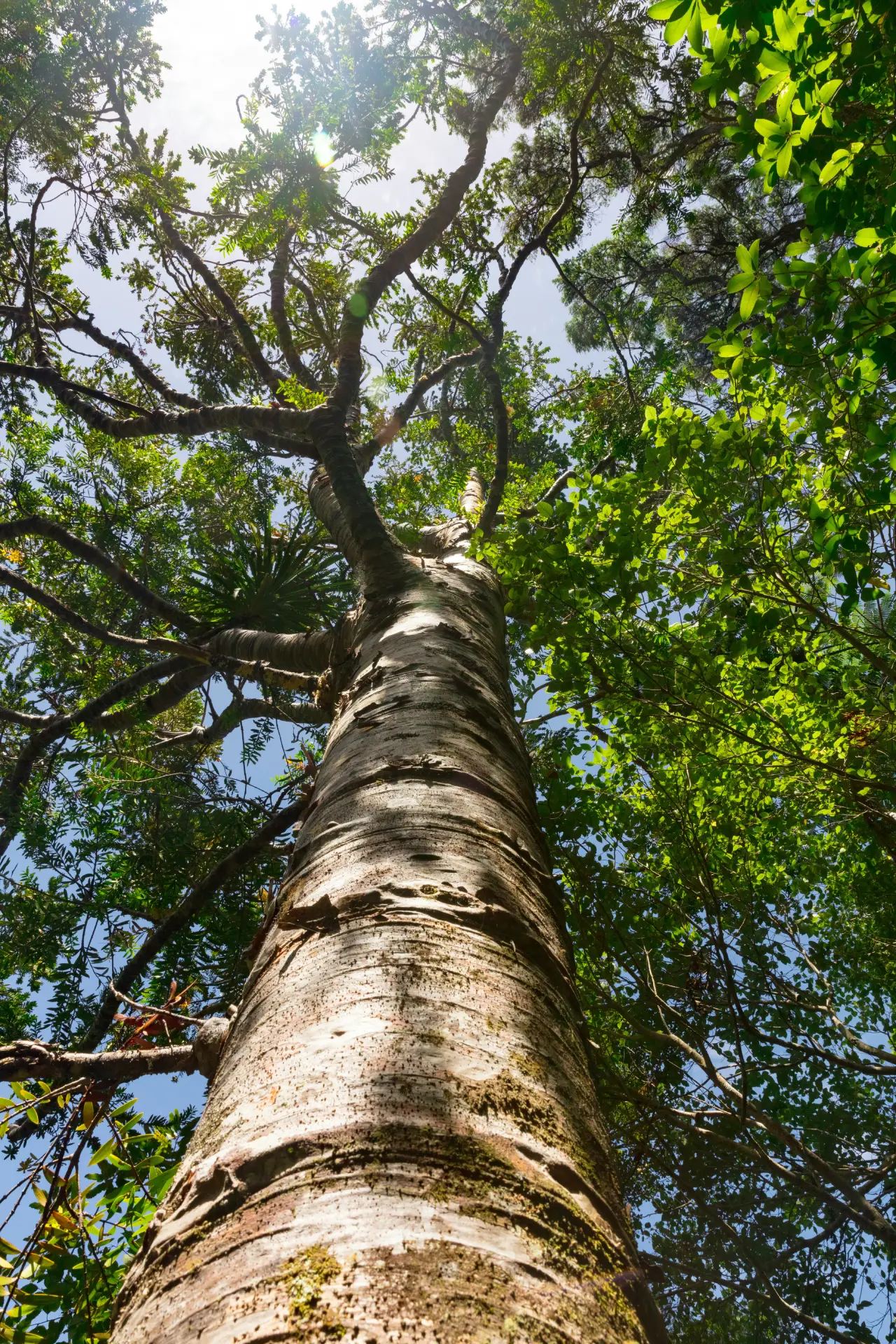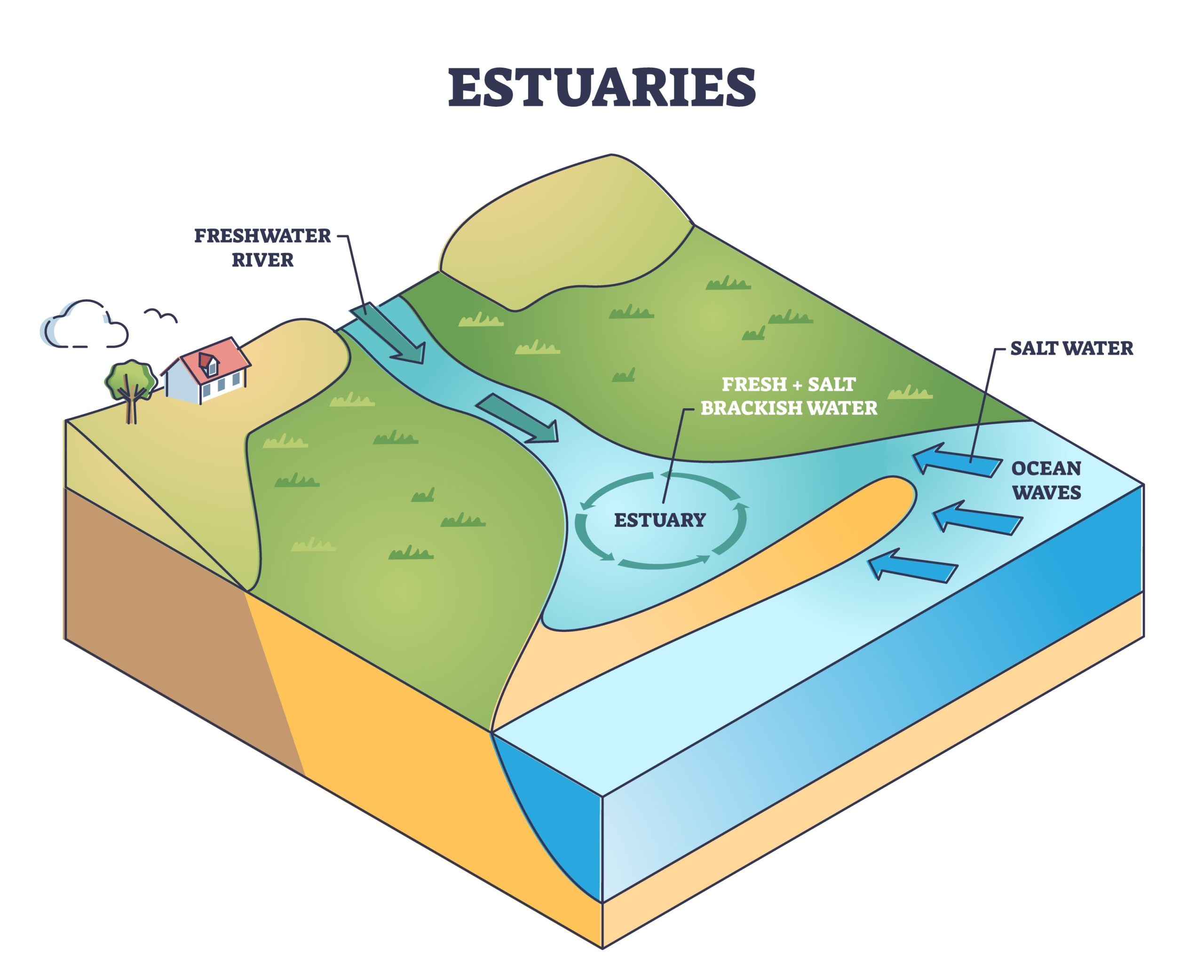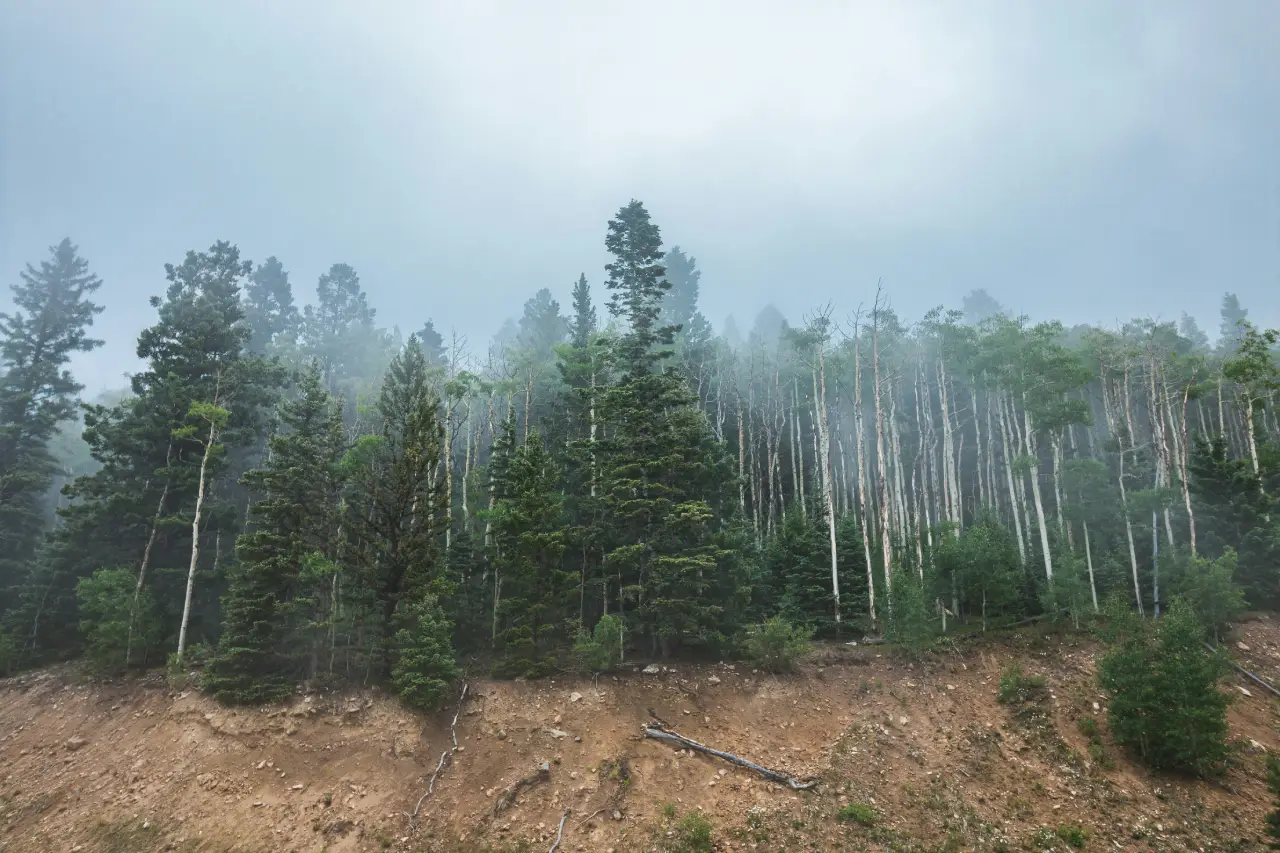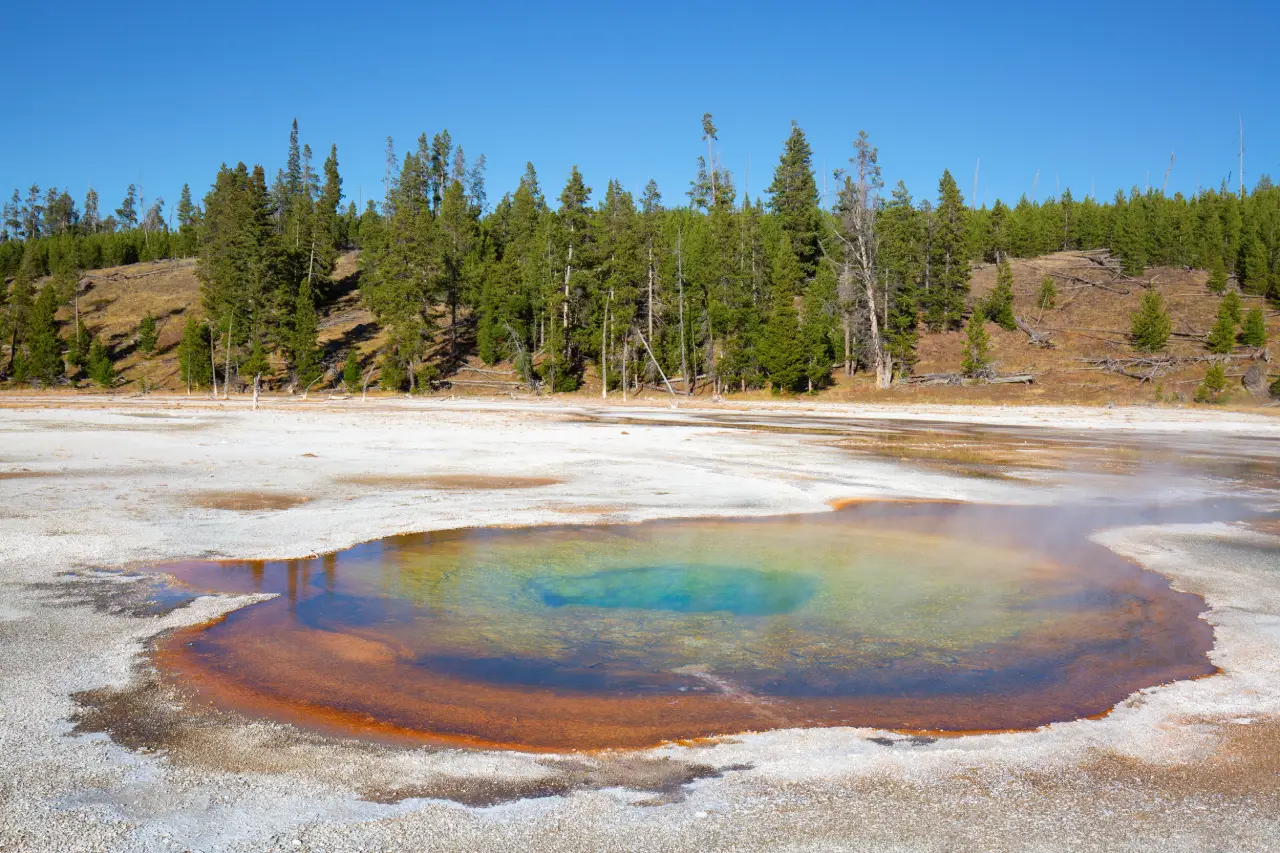Water travels up a tree trunk at up to 160 feet (50 meters) per hour!

Unlike animals, plants and trees are immovable and hence cannot access water easily. Plants can only absorb water via their roots, from the soil. This water needs to make it to the tips of their leaves. This can be as far away as 300 feet (100 meters) or more, for giant redwoods.
Water travels through special tubes called xylem, which are not made of living cells but act as straws that suck water upwards into the leaves, where it eventually evaporates. This process is called transpiration. Water sticks to the inner walls of the xylem with surface tension, just like droplets that form as dew on blades of grass.
In small plants, these tubes are quite narrow and the water moves through them slowly, just a few inches or centimeters per day. For tall plants, like giant redwood trees, the water can move very quickly!
Transpiration happens daily. In forests, this process makes the air more humid, meaning that the air holds a lot of water. The climate in and around forests is typically cooler and wetter than surrounding areas because trees keep the water moving from the ground back into the atmosphere.






